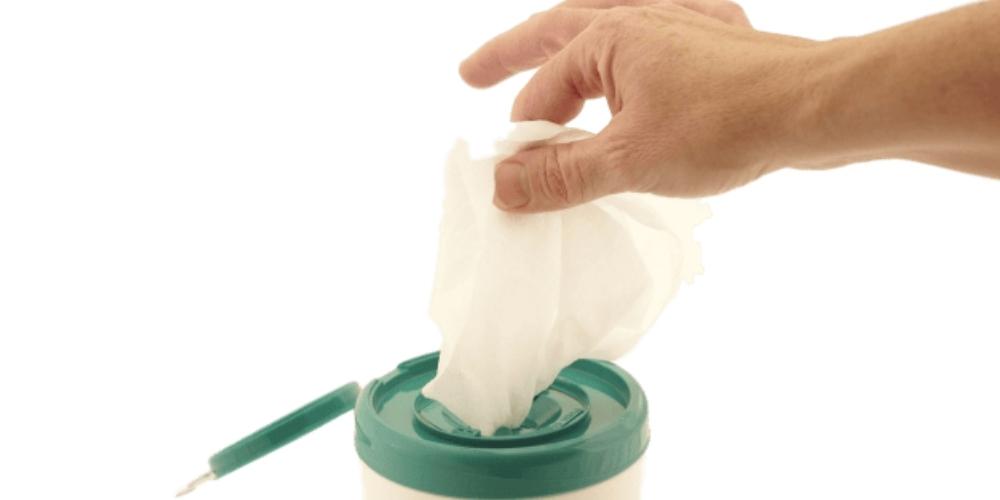The Spaulding classification: what type of disinfection should you perform?
According to the Spaulding Classification, medical devices and instruments can be classified into three categories. The category determines if one must perform a high or low-level disinfection; or even a sterilization.
- Non-critical devices
- Semi-critical devices
- Critical devices
Instruments in contact with intact skin ONLY
Stethoscopes, general purpose ultrasound transducers & cables, or blood pressure cuffs
Low-level disinfection
Instruments in contact with either non-intact skin or a mucous membrane
Endoscopes, endocavity ultrasonic probes and vagina specula (reusable ones)
High-level disinfection
Instruments that enter sterile tissue or vascular system
Surgical instruments, catheters
Sterilization
The French study that points out the limits of low-level disinfection
In 2012, a French radiology center made a study to determine the efficacy of low-level disinfection on its endocavity ultrasound transducers. Over a six-month period, a laboratory collected 300 samples on three different GE endocavity probes within the radiology center, after a low-level disinfection.
After each ultrasound exam, the physician would carefully remove the ultrasound cover, and use a quaternary ammonium wipe to disinfect the probe. Then, a microbiologist would take a sample using flocked swabs, and send it straight to a laboratory.
Out of the 300 samples, 100 were tested for HPV, 100 for C. trachomatis (aka Chlamydia) and mycoplasmas, and the remaining 100 for various bacteria and fungi.
13% of the first set of samples (Human Papilloma Virus HPV) were positive. HPV is the most widespread STD (sexually transmitted disease). Also, it is the primary cause of cervical cancer.
Then in the second set of samples, 20% were positive for C. trachomatis. This STD is responsible for cervicitis, pelvic inflammation and can lead to infertility and ectopic pregnancies. Therefore, the presence of this bacteria in such proportions is a serious source of concern.
Besides, the second set of samples also reveals the presence of Mycoplasmas on 8% of the probes. In addition, this bacteria is also behind pelvic inflammatory disease.Although the third set didn't reveal any organism related to STD or neonate disease, many gram-positive and gram-negative bacteria were found. They include S. Aureus and Pseudomonas, to name only those responsible for HAIs (Healthcare-associated infection)
You can access the full study by clicking here
Third sample: S. Aureus & Pseudomonas
Finally, the third set of samples is certainly the one that raises the more concern. Indeed, out of 100 samples, 86 were contaminated with bacterial flora.
Skin bacterial flora
The skin bacterial flora found on the endocavity probes included coagulase-negative staphylococci CNS (73% of the samples), Micrococcus sp. (20% of the samples) and Staphylococcus Aureus (methicillin sensitive, 4% of the samples) to name a few.
S. Aureus is responsible for skin and respiratory infections. About 33% of the US population carries S. Aureus, leading to up to 50.000 deaths each year. Also, staphylococcus infects more than 500.000 patients each year in American hospitals.
The symptoms of an infection by S. Aureus are abscesses, pus, swellings or cellulitis. In the case of a respiratory infection, S. Aureus can cause pneumonia or bacteremia.Besides, the lab found these microorganisms in alarming proportions: 10->3000 CFU/probe (Colony forming unit).
Environmental bacterial floraAlthough environmental flora was detected in fewer occurrences and numbers, some of these bacteria are responsible for healthcare-associated infections: Pseudomonas Stutzeri & Aeruginosa, Acinetobacter baumannii, Aeromonas sp. and others. As a result, they also raised a red flag regarding the efficacy of a LLD alone on ultrasound transducers.
Recommendations and disinfection guidelines in the USA
In the USA, both CDC (center for disease control) and AIUM (American Institute of Ultrasound Medicine) have issued guidelines for the disinfection of ultrasound probes. Hence, they say that endocavity probes should be covered with a proper sheath. Most importantly, practitioners must perform a high-level disinfection between each patient.
You can refer to the ultrasound cleaning and disinfection guidelines here.
Conclusion
In conclusion, we can learn from the study that low-level disinfection, although necessary for reprocessing an endocavity probe, is not enough to maintain a safe environment for the patients and the medical professionals in the case of semi-critical devices.
Therefore, wipes impregnated with quaternary ammonium should only be used as a first cleaning step of an ultrasound transducer (or on non-critical devices). The next steps involve soaking of the probe, with the use of medical-grade disinfectants.
Finally, be sure always to follow guidelines issued by the CDC or the AIUM that recommend performing a high-level disinfection between each end-cavity ultrasound exam.







